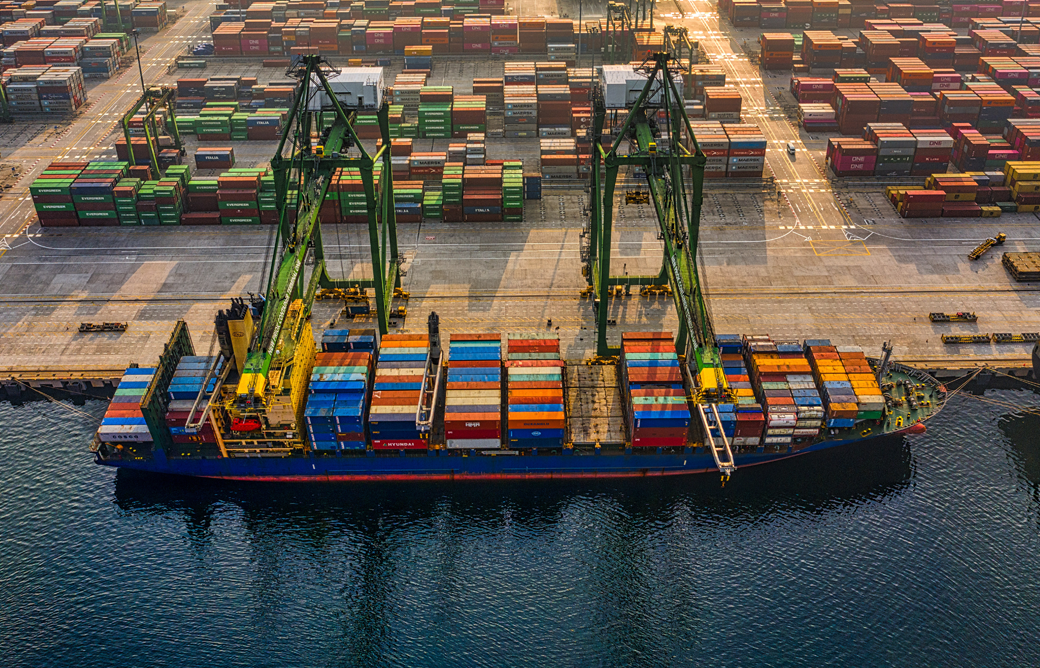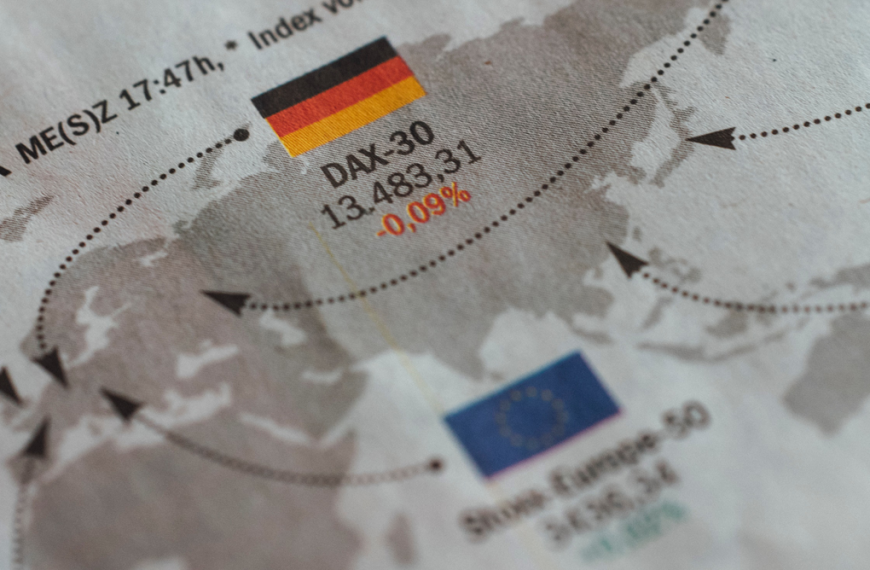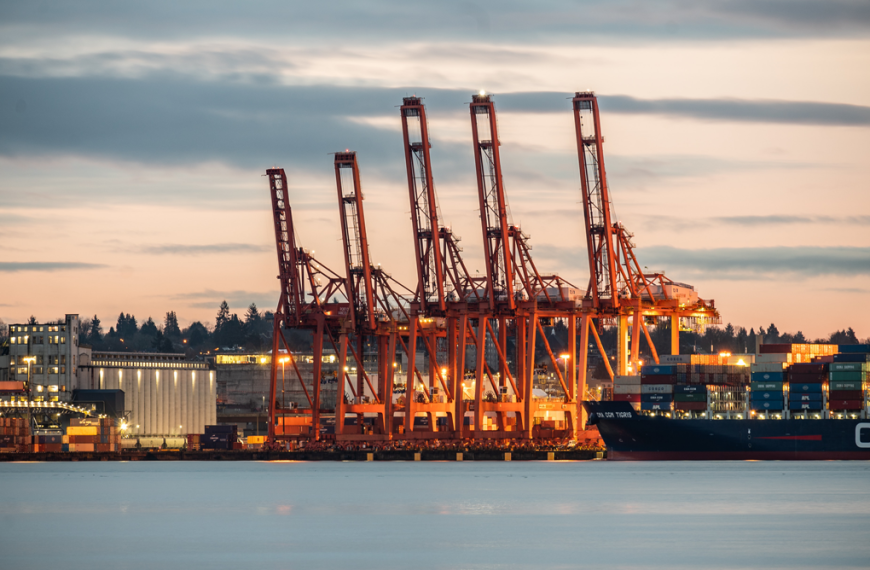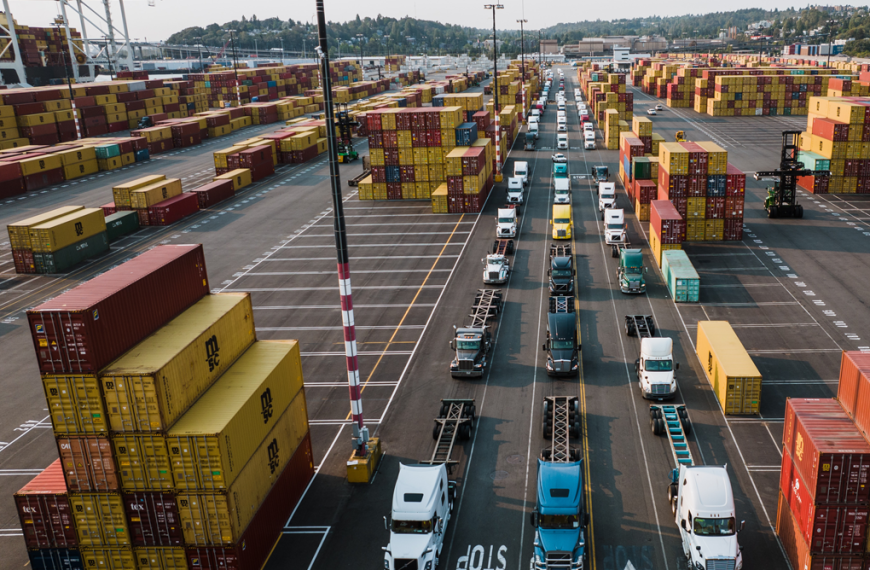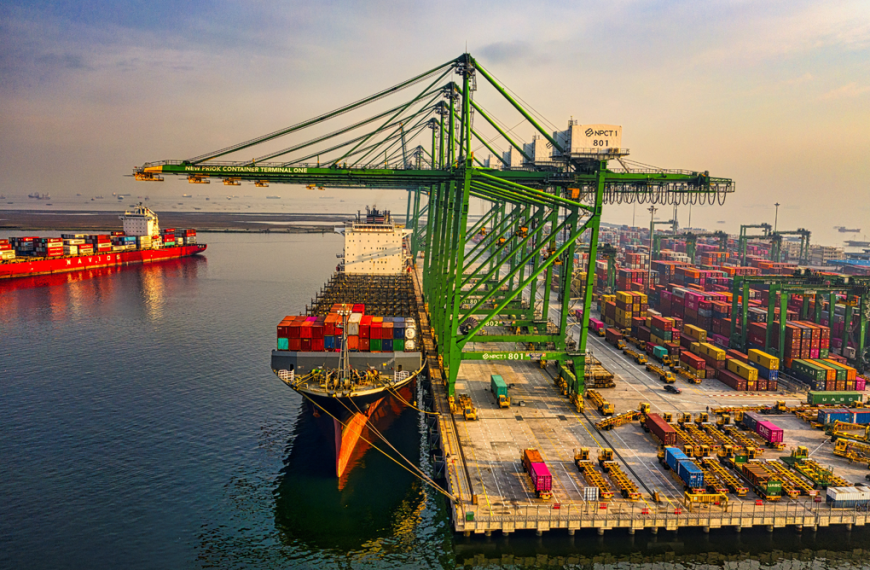Sea Freight Logistics plays a vital role in global trade. Learn about its advantages, disadvantages, and future outlook in this comprehensive guide.
Sea freight logistics is a critical component of global trade. With over 90% of global trade transported by sea, it plays a pivotal role in facilitating international commerce. In this article, we will explore the different aspects of sea freight logistics, from the types of operations to the key players and stakeholders in the industry.
- What is Sea Freight Logistics?
- Importance of Sea Freight Logistics in Global Trade
- Overview of the Sea Freight Industry
- Statistics on Sea Freight Industry
- Key Players and Stakeholders in the Sea Freight Industry
- Types of Sea Freight Logistics Operations
- Different Types of Vessels Used in Sea Freight Logistics
- Different Types of Cargo
- Roles and Responsibilities of Sea Freight Logistics Professionals
- Sea Freight Logistics Operations and Best Practices
- Factors Affecting Sea Freight Logistics
- Advantages of Sea Freight Logistics
- Disadvantages of Sea Freight Logistics
- Future Outlook of Sea Freight Logistics
- Frequently Asked Questions (FAQs)
What is Sea Freight Logistics?
Sea freight logistics refers to the transportation of goods by sea from one location to another. It encompasses a range of activities, including cargo booking, vessel scheduling, customs clearance, and delivery of goods to the final destination. Sea freight logistics is a complex process that involves multiple parties, including freight forwarders, shipping lines, ports, and customs authorities.
Importance of Sea Freight Logistics in Global Trade
Sea freight logistics is a vital link in the global supply chain. It provides an affordable and efficient mode of transportation for a wide range of goods, including bulk commodities, manufactured goods, and consumer products. Without sea freight logistics, global trade would be severely impacted, resulting in higher prices and reduced availability of goods.
Global trade relies heavily on sea freight logistics, which refers to the movement of goods by sea. As the world’s population grows and economies expand, the demand for goods and products increases, making sea freight logistics crucial for the global economy. In this article, we will explore the significance of sea freight logistics in global trade.
Cost-Effective
Sea freight logistics is one of the most cost-effective methods of transportation for goods. It is cheaper than air freight and often cheaper than land transportation, especially for bulk and heavy items. This cost-effectiveness allows businesses to transport goods across the world at a lower cost, making it possible for companies to sell their products at competitive prices.
Large Capacity
Sea freight logistics has a large capacity for goods. Container ships can carry thousands of containers, making it easier for businesses to transport large quantities of goods across the world. This is especially important for businesses that need to transport a high volume of goods, such as manufacturers and distributors.
Global Reach
Sea freight logistics allows businesses to transport goods to virtually any destination in the world. With ports in every corner of the globe, businesses can reach even the most remote locations. This allows businesses to expand their market reach and sell their products in new markets, driving economic growth and development.
Environmentally Friendly
Sea freight logistics is one of the most environmentally friendly modes of transportation for goods. Compared to other modes of transportation, such as air freight and road transportation, sea freight logistics produces fewer greenhouse gas emissions. Additionally, container ships are becoming increasingly energy-efficient, making sea freight logistics an eco-friendly option for businesses.
Infrastructure Development
Sea freight logistics is vital for the development of infrastructure in many countries. Ports, harbors, and other sea freight infrastructure help drive economic growth by facilitating the movement of goods across the world. This infrastructure provides jobs and boosts local economies, making sea freight logistics a significant contributor to economic development.
| Importance of Sea Freight Logistics | Description |
|---|---|
| Facilitates global trade | Sea freight logistics enables the movement of goods across different countries, allowing for international trade to thrive. |
| Cost-effective | Sea freight transportation is typically cheaper compared to other modes of transportation, making it a preferred choice for businesses. |
| Accommodates large shipments | Sea freight logistics can handle larger shipments that may not be possible with other modes of transportation. |
| Environmentally friendly | Compared to air freight transportation, sea freight is a more eco-friendly option, emitting less carbon dioxide. |
| Supports economic growth | Sea freight logistics plays a significant role in supporting economic growth by creating jobs and generating revenue for countries. |
In conclusion, sea freight logistics plays a crucial role in global trade. It is cost-effective, has a large capacity for goods, allows businesses to reach global destinations, is environmentally friendly, and helps drive infrastructure development in many countries. With the world’s population growing, demand for goods and products will continue to rise, making sea freight logistics an indispensable part of the global economy.

Overview of the Sea Freight Industry
The sea freight industry is a vast and complex network of shipping lines, ports, and logistics providers. According to the United Nations Conference on Trade and Development (UNCTAD), global seaborne trade reached 11 billion tons in 2020, with a total value of over $14 trillion. The industry is highly competitive, with shipping lines and logistics providers vying for market share.
Statistics on Sea Freight Industry
- In 2020, the top three countries for container throughput were China, the United States, and Singapore.
- The global container throughput in 2020 was over 800 million twenty-foot equivalent units (TEUs).
- The top three shipping lines in terms of TEU capacity in 2020 were APM-Maersk, MSC, and CMA-CGM.
Let’s take a look at some other interesting statistics on the sea freight industry.
- Growth in Sea Freight Industry: According to a report by Allied Market Research, the global sea freight industry was valued at $530.81 billion in 2019 and is projected to reach $815.24 billion by 2027, growing at a CAGR of 5.6% from 2020 to 2027.
- Busiest Ports: The busiest port in the world in terms of container throughput is the Port of Shanghai in China, with a throughput of over 43 million twenty-foot equivalent units (TEUs) in 2020. The second and third busiest ports are Singapore and Shenzhen, respectively.
- Top Shipping Companies: The top three container shipping companies in terms of market share are Maersk, MSC, and CMA CGM. Together, they control over 40% of the global container shipping market.
- Trade Routes: The Asia-Pacific region dominates the sea freight industry, accounting for over 60% of global container throughput. The busiest trade route is the Asia-Europe trade route, followed by the trans-Pacific and Asia-North America trade routes.
- Impact of COVID-19: The COVID-19 pandemic had a significant impact on the sea freight industry, with disruptions in supply chains and reduced demand for goods. However, the industry has shown resilience and adapted to the challenges, with an increase in demand for certain types of goods such as medical supplies and personal protective equipment.
- Environmental Impact: The sea freight industry accounts for a significant amount of global carbon emissions, with estimates suggesting that it contributes to around 3% of total global emissions. Efforts are being made to reduce the industry’s environmental impact through measures such as slow-steaming and the use of alternative fuels.
| Statistic | Description |
|---|---|
| Global trade by sea | Over 90% of the world’s trade is carried by sea, making sea freight industry a vital part of the global economy. |
| Container throughput | In 2020, container throughput at the world’s busiest port, Shanghai, reached 43.5 million twenty-foot equivalent units (TEUs). |
| Top container shipping companies | In 2020, Maersk Line was the world’s leading container shipping company, with a market share of 16.6%. |
| Average vessel size | The average size of container vessels has increased from 5,000 TEUs in 2005 to over 12,000 TEUs in 2021, as shipping companies strive for economies of scale. |
| CO2 emissions | The sea freight industry is responsible for approximately 3% of global carbon dioxide emissions, with container ships accounting for the majority of emissions. |
| Trade volume | The global trade volume transported by sea is expected to reach 12.3 billion tons by 2023, representing an increase of 3.6% from 2019. |
In conclusion, the sea freight industry plays a vital role in global trade, and these statistics highlight its growth, key players, trade routes, and environmental impact. Understanding these statistics can help businesses make informed decisions about their logistics and supply chain strategies.
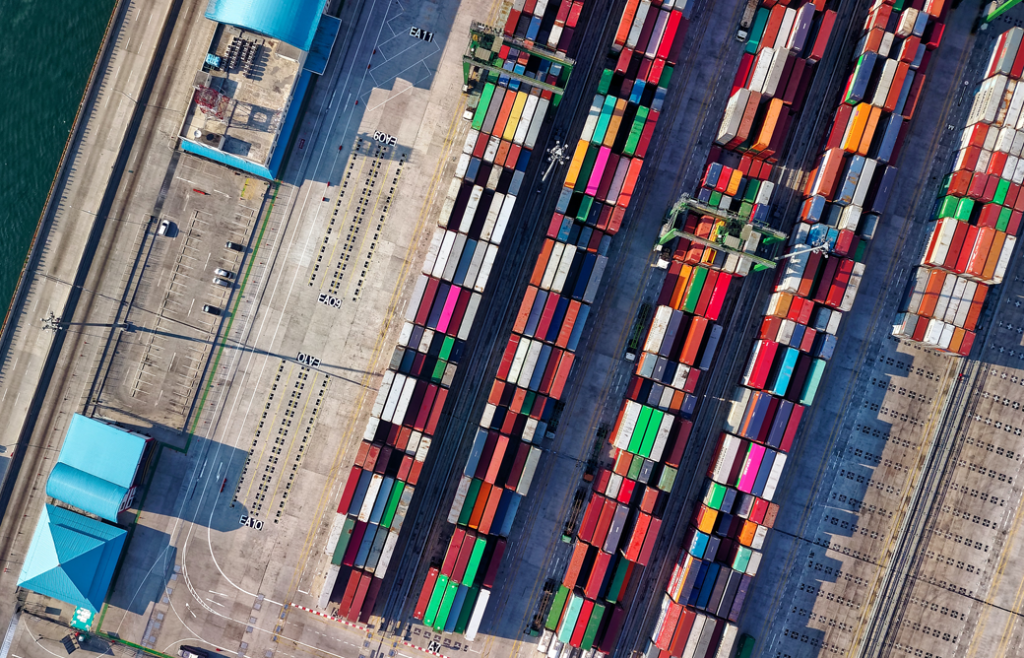
Key Players and Stakeholders in the Sea Freight Industry
The sea freight industry involves a range of players, including shipping lines, freight forwarders, ports, and customs authorities. The key stakeholders in the industry include:
- Shipping lines: These are companies that own and operate vessels that transport goods by sea. They are responsible for scheduling, loading, and unloading cargo.
- Freight forwarders: These are companies that arrange the transportation of goods on behalf of shippers. They handle the logistics of moving cargo from the point of origin to the final destination.
- Ports: These are facilities that provide the infrastructure for vessels to load and unload cargo. They are responsible for ensuring the safe and efficient handling of goods.
- Customs authorities: These are government agencies responsible for enforcing customs laws and regulations. They ensure that goods entering and leaving a country comply with the relevant laws and regulations.
Types of Sea Freight Logistics Operations
Sea freight logistics involves a range of operations, including:
- Full container load (FCL): This is when a single shipper fills an entire container with their cargo.
- Less than container load (LCL): This is when multiple shippers share a container, with each paying for the space they use.
- Roll-on/roll-off (Ro-Ro): This is when vehicles or wheeled cargo are driven onto a vessel and secured for transport.
- Breakbulk: This is when cargo is transported in smaller units, such as crates or pallets, and loaded and unloaded manually.
Different Types of Vessels Used in Sea Freight Logistics
There are several types of vessels used in sea freight logistics, each with their own unique capabilities and limitations. These include:
- Container ships: These are large, specialized vessels designed to transport cargo in standardized containers. They are highly efficient and can carry large volumes of cargo at relatively low costs.
- Bulk carriers: These are vessels designed to transport large quantities of bulk cargo, such as coal, grain, and iron ore. They have large open holds and are not designed to carry containers.
- Tankers: These are vessels designed to transport liquid cargo, such as oil and gas. They come in different sizes, ranging from small coastal tankers to large supertankers that can carry millions of barrels of oil.
- Ro-Ro ships: These are vessels designed to transport wheeled cargo, such as cars, trucks, and trailers. They have large ramps that allow vehicles to be driven on and off the ship.
- Break-bulk ships: These are vessels designed to transport non-containerized cargo, such as machinery, equipment, and oversized cargo. They have a variety of cargo holds and are designed to carry different types of cargo.
| Vessel Type | Description |
|---|---|
| Container Ships | These are designed to carry large quantities of cargo in standard-sized containers. They are the most common type of vessel used in sea freight logistics. |
| Bulk Carriers | These are designed to transport loose cargo such as coal, grain, and ore. They have large cargo holds and are equipped with cranes to load and unload cargo. |
| Tankers | These are designed to transport liquid cargo such as oil, chemicals, and liquefied natural gas. They have specialized tanks and pumps to load and unload cargo. |
| Roll-On/Roll-Off (Ro-Ro) Ships | These are designed to transport wheeled cargo such as cars, trucks, and trailers. They have ramps that allow vehicles to drive on and off the ship. |
| Reefer Ships | These are designed to transport refrigerated cargo such as fresh fruit, vegetables, and meat. They have refrigeration units to keep the cargo at a specific temperature. |
Note: There are other types of vessels used in sea freight logistics, but these are the most common ones.
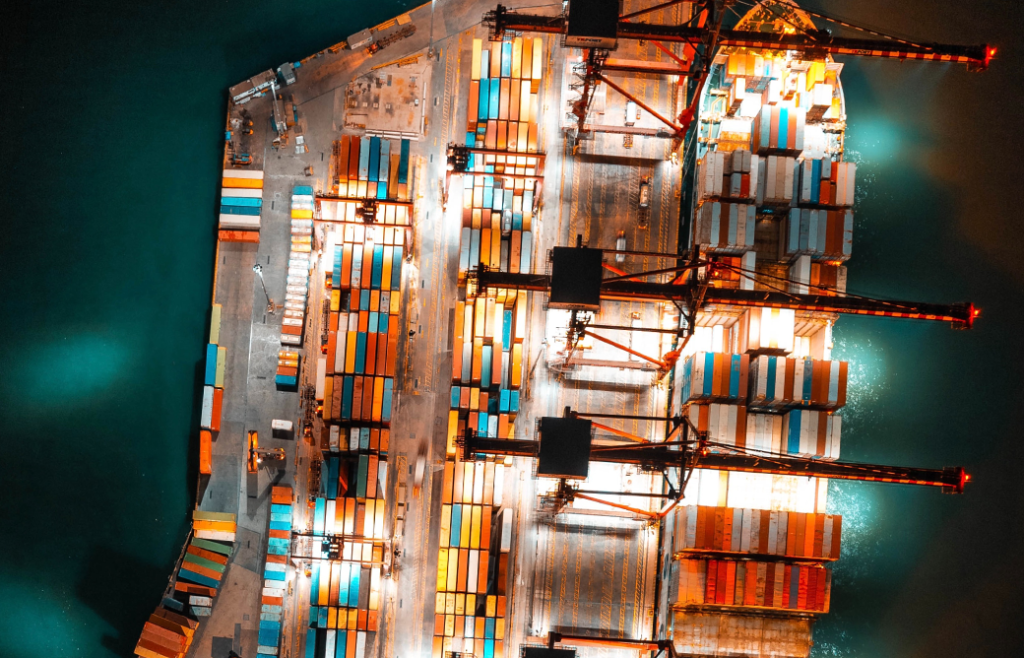
Different Types of Cargo
Sea freight logistics can transport a wide range of cargo types, including:
- Dry cargo: This includes bulk cargo such as grain, coal, and iron ore, as well as containerized cargo such as electronics, clothing, and furniture.
- Liquid cargo: This includes oil, gas, chemicals, and other liquids that are transported in tankers.
- Refrigerated cargo: This includes perishable goods such as fruits, vegetables, and meat, which are transported in specialized refrigerated containers.
- Oversized cargo: This includes cargo that is too large or heavy to be transported in standard containers or on trucks. Examples include large machinery, industrial equipment, and vehicles.
Roles and Responsibilities of Sea Freight Logistics Professionals
Sea freight logistics involves a range of professionals who play critical roles in ensuring the smooth and efficient transport of goods. Some of the key players include:
- Freight Forwarders: Freight forwarders are responsible for coordinating and arranging the transport of goods from the origin to the destination. They handle all aspects of the shipping process, including documentation, customs clearance, and cargo insurance.
- Ship Brokers: Ship brokers act as intermediaries between shippers and carriers, negotiating the best deals for their clients and arranging for the transport of goods.
- Customs Brokers: Customs brokers are responsible for ensuring that goods comply with all customs regulations and facilitating the clearance of goods through customs.
- Port Operators: Port operators manage the loading and unloading of cargo from ships and oversee the maintenance and operation of port facilities.
- Ship Operators: Ship operators are responsible for managing the vessels that transport goods, ensuring that they are maintained and operated safely and efficiently.
Sea Freight Logistics Operations and Best Practices
Sea freight logistics involves a range of operations that must be executed with precision to ensure that goods are transported safely and efficiently. Some of the key operations include:
- Booking: Booking involves reserving space on a vessel for cargo and preparing all necessary documentation.
- Loading and Unloading: Loading and unloading involve the transfer of cargo between ships and port facilities, often using specialized equipment such as cranes and forklifts.
- Cargo Consolidation: Cargo consolidation involves combining multiple smaller shipments into a single larger shipment to reduce costs and improve efficiency.
- Transportation: Transportation involves the movement of goods from the port to the final destination, often using a combination of trucks, trains, and other forms of transportation.
To ensure the smooth and efficient execution of these operations, there are several best practices that logistics professionals follow, including:
- Effective Communication: Effective communication between all parties involved in the shipping process is critical to ensuring that everything runs smoothly.
- Advanced Planning: Advanced planning and preparation help to minimize the risk of delays and ensure that all necessary documentation and permits are in order.
- Proper Cargo Packing: Proper packing of cargo is essential to prevent damage during transport, and logistics professionals must ensure that all cargo is packed according to the necessary standards.
- Risk Management: Risk management strategies, such as cargo insurance, help to minimize the risk of financial loss due to damage or loss of goods.
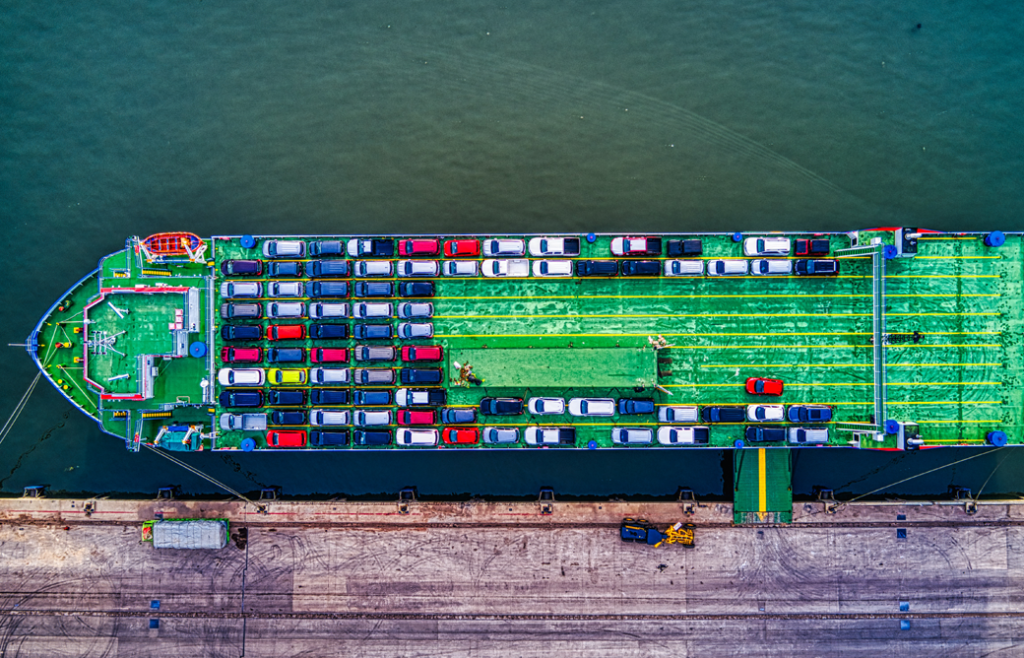
Factors Affecting Sea Freight Logistics
Several factors can affect the sea freight logistics industry, including:
- Market Conditions: The state of the global economy and demand for goods can significantly impact the industry’s growth and profitability.
- Regulatory Environment: Changes in regulations, such as new customs requirements or environmental regulations, can impact the industry’s operations and costs.
- Infrastructure and Technology: Improvements in port facilities, ships, and technology can increase efficiency and reduce costs.
- Natural Disasters: Natural disasters, such as hurricanes and tsunamis, can disrupt shipping routes and cause significant damage to cargo.
Advantages of Sea Freight Logistics
Sea freight logistics has many advantages that make it a popular choice for businesses involved in international trade. Some of the key advantages include:
- Cost-effective: Sea freight is generally cheaper than air freight, making it a more cost-effective option for businesses looking to ship large quantities of goods.
- Suitable for large items: Sea freight is ideal for shipping large or bulky items, such as furniture, vehicles, and machinery, that may not be suitable for air or road transport.
- Environmentally friendly: Sea freight is one of the most environmentally friendly modes of transport, producing fewer emissions per tonne of cargo than other transport modes.
- Less congestion: Sea ports are less congested than airports and other transportation hubs, which can help to reduce the time it takes to clear customs and get goods to their final destination.
Disadvantages of Sea Freight Logistics
While there are many advantages to sea freight logistics, there are also some disadvantages to consider. These include:
- Longer transit times: Sea freight is generally slower than air freight, which can mean longer transit times and potentially longer lead times for customers.
- Limited accessibility: Sea freight is only accessible to businesses that are located near a sea port, which may not be convenient for all businesses.
- Risk of damage: Sea freight is susceptible to damage from rough seas and storms, which can result in delays and damage to goods.
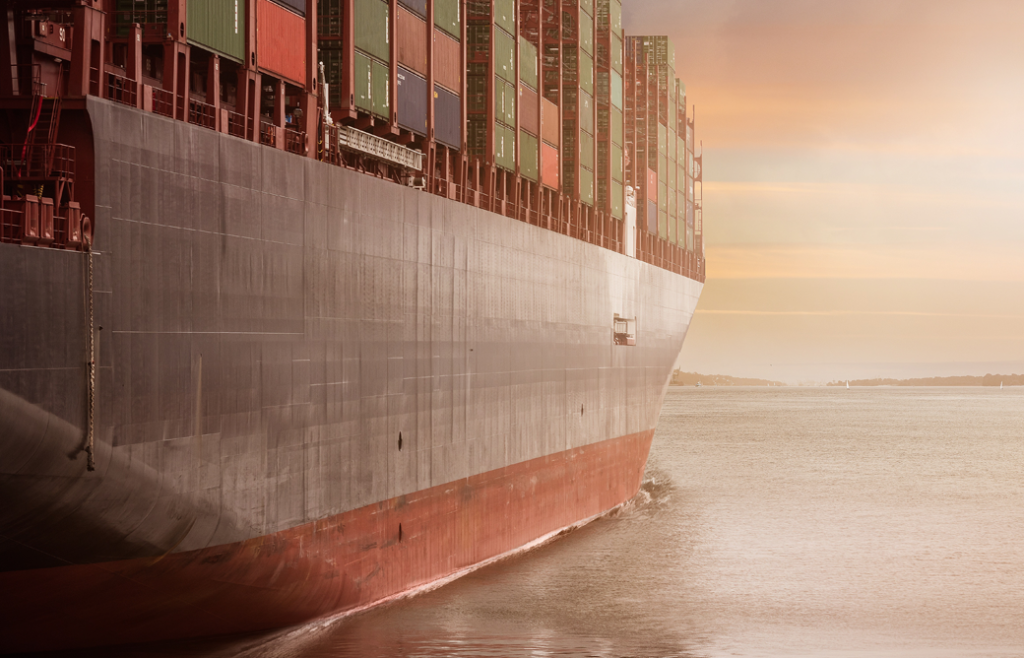
Future Outlook of Sea Freight Logistics
Despite the challenges posed by COVID-19, the future outlook for sea freight logistics remains positive. The global trade in goods is expected to continue to grow, and sea freight is likely to remain a key mode of transport for businesses looking to move goods around the world.
However, the industry is also likely to face challenges, including increased competition from other modes of transport, rising fuel costs, and growing pressure to reduce emissions and operate more sustainably.
To stay ahead of these challenges, businesses involved in sea freight logistics will need to continue to invest in technology, improve supply chain visibility, and work closely with their logistics partners to optimize their operations and ensure they are well-positioned for future growth.
Frequently Asked Questions (FAQs)
What is sea freight shipping?
Sea freight shipping is a transportation method that involves the movement of goods via ships or vessels across the ocean or sea. It is a cost-effective and efficient way to transport large quantities of goods.
What is the main purpose for sea freight?
The main purpose of sea freight is to transport goods from one country to another, especially for international trade. It allows businesses to import and export large quantities of goods at a lower cost compared to other transportation methods.
What is the meaning of sea logistics?
Sea logistics, also known as sea freight logistics, is the planning, coordination, and execution of sea freight shipping operations. It involves the management of the entire supply chain, from the point of origin to the point of destination, including transportation, storage, and distribution.
What are the types of sea freight transport?
The types of sea freight transport include Full Container Load (FCL) and Less than Container Load (LCL). FCL involves the transportation of goods in a container that is exclusively used for a single shipment. LCL involves the transportation of goods in a container that is shared with other shipments. Additionally, Roll-on/Roll-off (Ro-Ro) and Break Bulk are used for specific types of cargo such as vehicles or large equipment.

